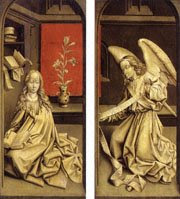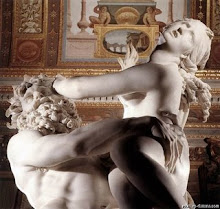
Arte e contexto
Velho sentado de Rembrandt van Rijn, 1652: contemplação e introspecção O barroco trouxe o crescimento das classes médias e a inclinação dos artistas por gêneros, até então, considerados menoresAs denominadas “categorias menores” são visivelmente utilizadas na pintura por inúmeros artistas do período. São representações do cotidiano e da natureza morta. Assim, pela primeira vez na história da arte, essas categorias assumiram um lugar de destaque, ficando no mesmo patamar dos gêneros considerados superiores da pintura, cujos temas eram extraídos da Bíblia, da História Clássica e da Mitologia. Os artistas barrocos se interessavam também por esses temas, principalmente quando eram encomendados pela aristocracia e pela Igreja. Mas jamais deixaram de olhar para as “categorias menores”.Tanto a renascença quanto o barroco, ambos movimentos complexos do ponto de vista estilístico, não constituíram processos artítiscos singulares e unificados. Atingiram diferentes lugares e épocas. O mesmo ocorreu com outros estilos daquele tempo - o maneirismo e o rococó. Todos eles, muitas vezes, entrelaçaram-se com o barroco. Por isso, não apenas o barroco descreveu as artes dos séculos XVI a XVIII. Mas uma coisa é certa: o barroco foi um estilo artístico dominante, que coloriu em graus variados todos os outros estilos.O contexto histórico era um momento de mudanças: a luta pelo poder entre os Estados europeus e correntes intelectuais, como as últimas fases da contra-reforma, o iluminismo e os primórdios da ciência moderna. Época marcada por conflitos como a Guerra dos Trinta Anos (1618-48) e cujo final seria assinalado pela eclosão da Revolução Francesa, em 1789.PejorativoOs termos barroco e rococó foram empregados, pela primeira vez, no bojo de um espírito depreciativo. A palavra barroco é originária de uma expressão portuguesa, cujo significado era pérola em estado irregular. Outros historiadores asseguram que a palavra é oriunda do italiano “barroco”, cujo significado seria obstáculo na lógica escolástica medieval. Em outro caso, a palavra circulou em sentido metafórico como no italiano e francês no século XVI, significando qualquer idéia enrolada ou um processo tortuoso e intricado de pensamento.Somente em 1771, o “Dictionnaire de Travaux” deu significado ao barroco (outro dicionário referia-se ao seu uso como sinônimo de excêntrico ou bizarro) como sendo “na pintura, um quadro ou figura em que as regras de proporção são observadas, sendo tudo representado com o capricho do artista”.Como o contexto histórico era totalitário - a doutrina do direito divino dos reis - ou marcado pelo ceticismo, isso não quer dizer, segundo alguns historiadores, que o barroco fosse conscientemente fomentado por mecenas católicos e monárquicos, como um instrumento deliberado de política, uma conseqüência inevitável dessas sociedades. E também não foi, como muitos pensam, uma invenção dos jesuítas. O barroco, para determinada corrente de pensadores, foi uma criação dos artistas e encontrou sua expressão tanto em pequenas obras particulares, quanto nas grandes pinturas e esculturas de caráter público, embora essas fossem as suas manifestações mais típicas.Estudiosos do período também assinalam que “a atitude da Igreja para com a arte barroca, sobretudo a realidade da vida das ordens religiosas, era ainda austera, talvez por motivos tanto de economia como de princípio”. A riqueza dos altares e decorações barrocas que enchem até hoje as igrejas católicas só começaram a ser introduzidas na segunda metade do século XVII e ao longo do século XVIII.
FIQUE POR DENTRO - Características da pintura barrocaO barroco foi um período estilístico e filosófico da história da sociedade ocidental que compreende desde meados do século XVI até o século XVIII. Foi inspirado no fervor religioso e na passionalidade da contra-reforma. O termo barroco advém da palavra portuguesa homônima, que significa ´pérola imperfeita´ ou, por extensão, jóia falsa. A palavra foi rapidamente introduzida nas línguas francesa e italiana. Estilo grandioso, monumental, retorcido, substituindo a unidade geométrica e o equilíbrio renascentista. Acentuado contraste claro-escuro (expressão dos sentimentos). Um recurso que visava a intensificar a sensação de profundidade. A escolha de cenas no seu momento de maior intensidade dramática foi outro efeito perseguido pelos artistas barrocos. Os rostos das personagens revelam emoções violentas e atingem uma dramaticidade desconhecida no Renascimento. A Itália foi um dos centros do estilo barroco. Dentre os pintores mais representativos de outros países temos os espanhóis Velazquez e Rubens e o holandês Rembrandt. Na escultura as características são o predomínio de linhas curvas, dos ondulados das vestes e do uso do dourado.























































































.jpg)


.jpg)











